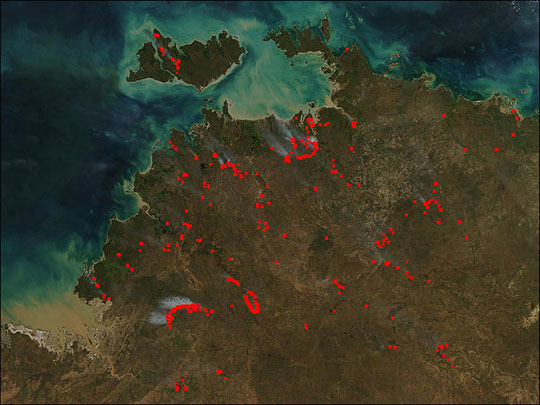Early Dry Season Fires in Northern Australia

Early dry season fires (red dots) are scattered across northern Australia in this Moderate Resolution Imaging Spectroradiometer (MODIS) image from the Aqua satellite captured on June 14, 2004. The country’s dry season is generally from May until October, with prescribed fire on rangeland and farmland typically conducted in the early part of the season and naturally ignited blazes dominating the late dry season. The Northern Territory has one of the highest frequencies of early season fires in Australia because land managers there conduct numerous prescribed fires to reduce grass that could act as fuel for more severe wildfires later in the dry season. For more information on the tropical savannas of northern Australia, visit the Savanna Explorer Website of Australia’s Cooperative Research Center for Tropical Savannas Management. This image is available in multiple resolutions.
But effective fire management over the past 20 years has reduced the annual average area burned – an area larger than Tasmania. The extent of this achievement is staggering, almost incomprehensible in a southern Australia context after the summer’s devastating bushfires.
The success in northern Australia is the result of sustained and arduous on-ground work by a range of landowners and managers. Of greatest significance is the fire management from Indigenous community-based ranger groups, which has led to one of the most significant greenhouse gas emissions reduction practices in Australia.
Credit: Image courtesy Jacques Descloitres, MODIS Rapid Response Team, NASA-GSFC
News coming your way





















